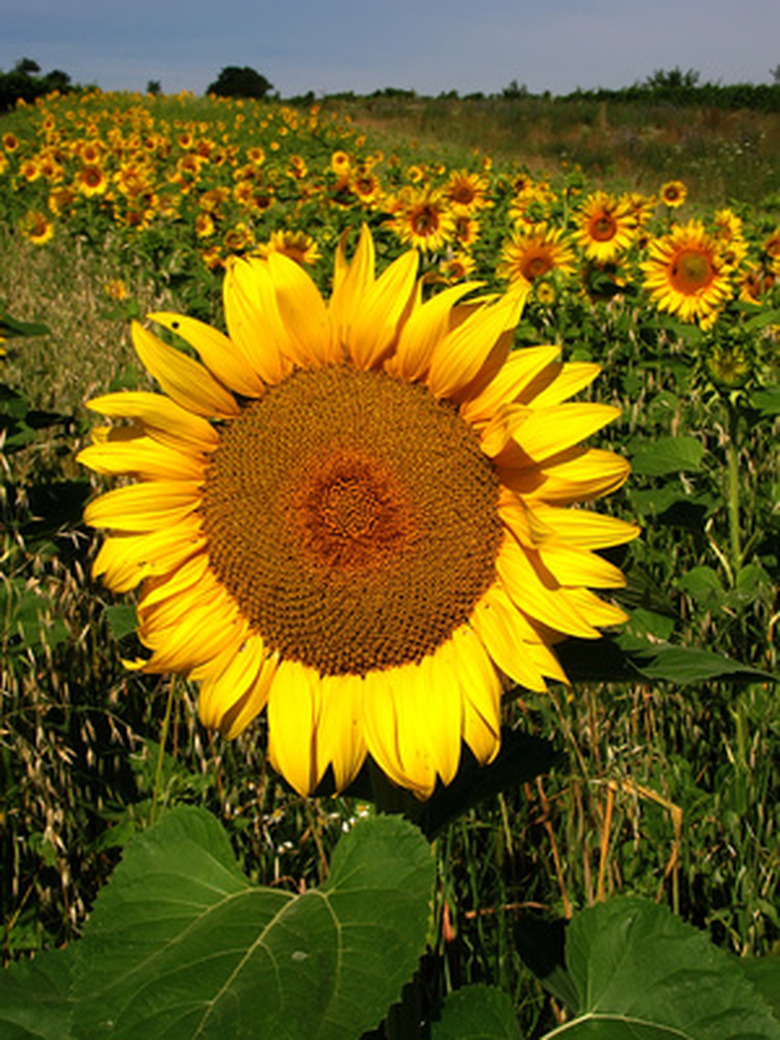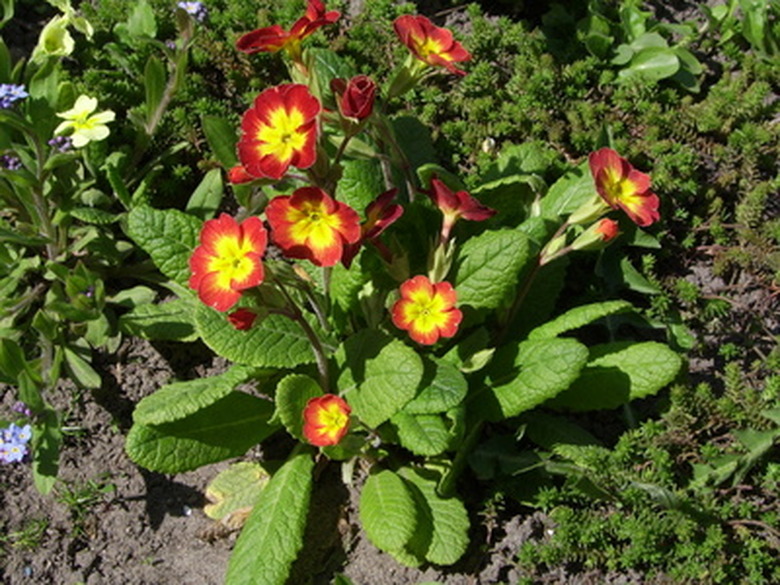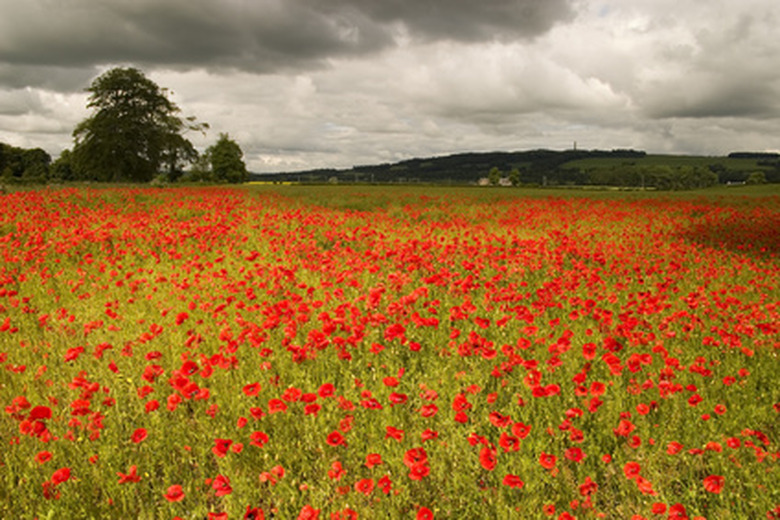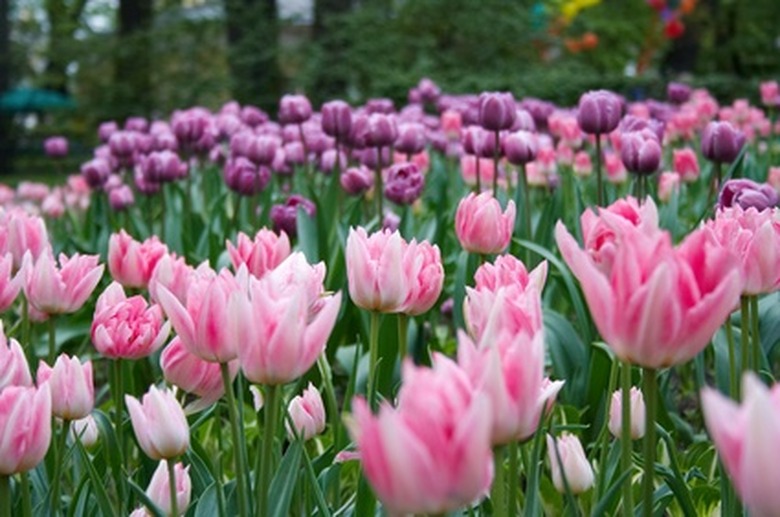List Of Italian Flowers
Italy's flowers reflect the country's diverse climactic conditions. The northerly Italian Alps are home to coniferous forests and seasonal flowers that can withstand the cold winters and wet summers. The northern lowlands (Po Valley) has seen the greatest degree of cultivation and human settlement, reducing its once deciduous profile. The Mediterranean region, which is identified most closely with Italy, defines primarily central and southern Italy.
Buttercups And Primroses
The cold and wet alpine climate in northern Italy sustains meadows of wildflowers at elevations of over 6,000 feet, including glacier buttercups and primroses. Glacier buttercup or glacier cowfoot (Ranunculus glacialis) is an herbaceous perennial, producing five-petal white and yellow flowers. Its herbal properties provide for homeopathic remedies. There are around 500 species of primroses (Primula), the majority of which grow in alpine and other cold climates. They are perennial, herbaceous plants and members of the Primulaceae family.
- Italy's flowers reflect the country's diverse climactic conditions.
- The cold and wet alpine climate in northern Italy sustains meadows of wildflowers at elevations of over 6,000 feet, including glacier buttercups and primroses.
Tuscan Crocuses, Sunflowers, Poppies
The Etruscan crocus (Crocus etruscus) grows in the woodlands and fields of Tuscany in central Italy. Its springtime blooms are lilac with cream-colored edges, usually appearing before the leaves unfold. It is a member of the Iridaceae family. The genus name derives from the Greek "krokos." It is a source of saffron, a popular cooking seasoning. The sunflower (Helianthus) is synonymous with Tuscany, although it also grows in other parts of Italy. It is a tall, fast growing annual that thrives in full sun and well drained soil, though it does best with generous, regular watering. It cannot tolerate frost, but it survives dry conditions. In Italy, the sunflower is called "girasole" which means "sun turner" for its ability to grow in the sun's direction (known as heliotropism). Sunflower seeds are a very popular snack. The Tuscan papavero or poppy (Papaver rhoeas) is an annual that probably arrived in Italy from north Africa. The bright red flowers thrive in the sunshine and the clay soil of Tuscany. Besides their natural beauty, Tuscan poppies have various culinary and medicinal benefits. The content of the petals aid insomnia, the seeds flavor bread and desserts and the leaves make delicious additions to salads.
- The Etruscan crocus (Crocus etruscus) grows in the woodlands and fields of Tuscany in central Italy.
- The content of the petals aid insomnia, the seeds flavor bread and desserts and the leaves make delicious additions to salads.
Tulips, Mimosas And More
Italy has a tradition of botanical gardens that dates back to the 13th century at the Vatican in Rome where a garden held plants for medical study. Today there are about 30 botanical gardens throughout Italy displaying plants and flowers of significance to the area. At scenic Lake Maggiore, the botanical gardens established in 1931 at the Villa Taranto, exhibit mimosas, tulips, magnolias, hortensias, and dahlias, set amidst fountains and water plants. The mild, Mediterranean-like climate favors tropical and warm weather plants and flowers. The 40-acre gardens were the brainchild of Capt. Neil McEacharn (1884 to 1964), a garden designer who donated them and the villa to the Italian state. The gardens are open to the public.
- Italy has a tradition of botanical gardens that dates back to the 13th century at the Vatican in Rome where a garden held plants for medical study.
- Neil McEacharn (1884 to 1964), a garden designer who donated them and the villa to the Italian state.



